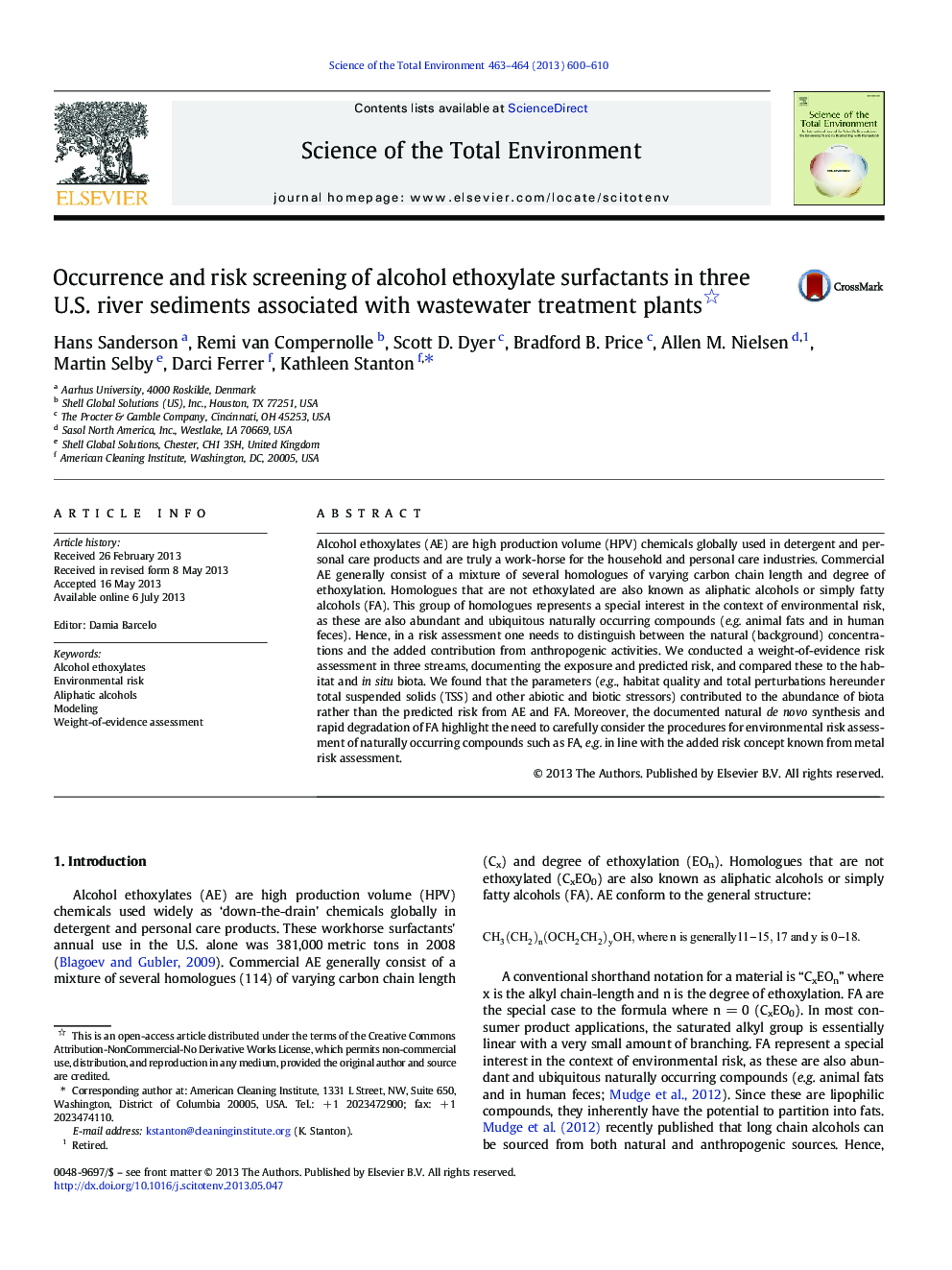| Article ID | Journal | Published Year | Pages | File Type |
|---|---|---|---|---|
| 6332854 | Science of The Total Environment | 2013 | 11 Pages |
Abstract
Alcohol ethoxylates (AE) are high production volume (HPV) chemicals globally used in detergent and personal care products and are truly a work-horse for the household and personal care industries. Commercial AE generally consist of a mixture of several homologues of varying carbon chain length and degree of ethoxylation. Homologues that are not ethoxylated are also known as aliphatic alcohols or simply fatty alcohols (FA). This group of homologues represents a special interest in the context of environmental risk, as these are also abundant and ubiquitous naturally occurring compounds (e.g. animal fats and in human feces). Hence, in a risk assessment one needs to distinguish between the natural (background) concentrations and the added contribution from anthropogenic activities. We conducted a weight-of-evidence risk assessment in three streams, documenting the exposure and predicted risk, and compared these to the habitat and in situ biota. We found that the parameters (e.g., habitat quality and total perturbations hereunder total suspended solids (TSS) and other abiotic and biotic stressors) contributed to the abundance of biota rather than the predicted risk from AE and FA. Moreover, the documented natural de novo synthesis and rapid degradation of FA highlight the need to carefully consider the procedures for environmental risk assessment of naturally occurring compounds such as FA, e.g. in line with the added risk concept known from metal risk assessment.
Related Topics
Life Sciences
Environmental Science
Environmental Chemistry
Authors
Hans Sanderson, Remi van Compernolle, Scott D. Dyer, Bradford B. Price, Allen M. Nielsen, Martin Selby, Darci Ferrer, Kathleen Stanton,
